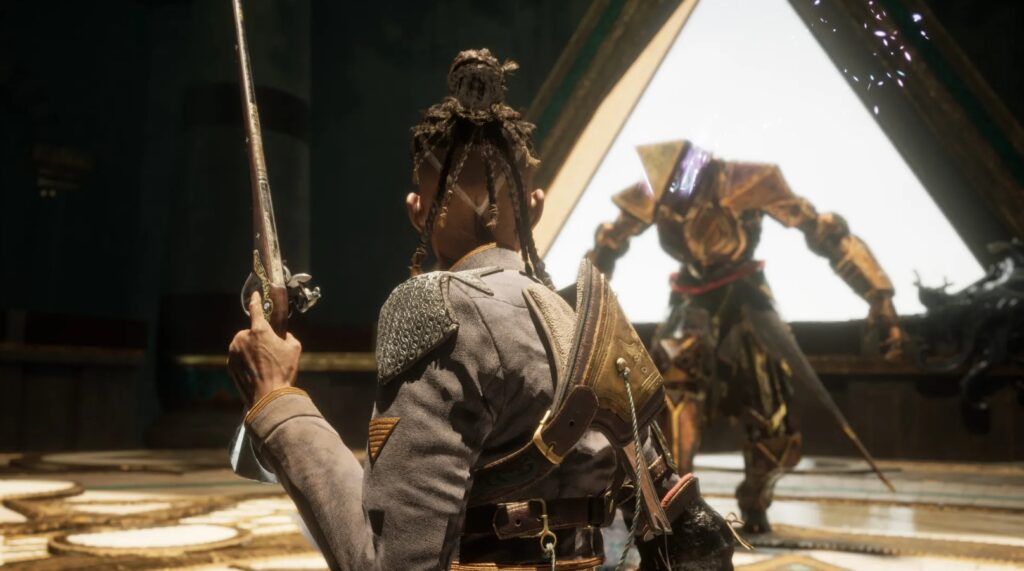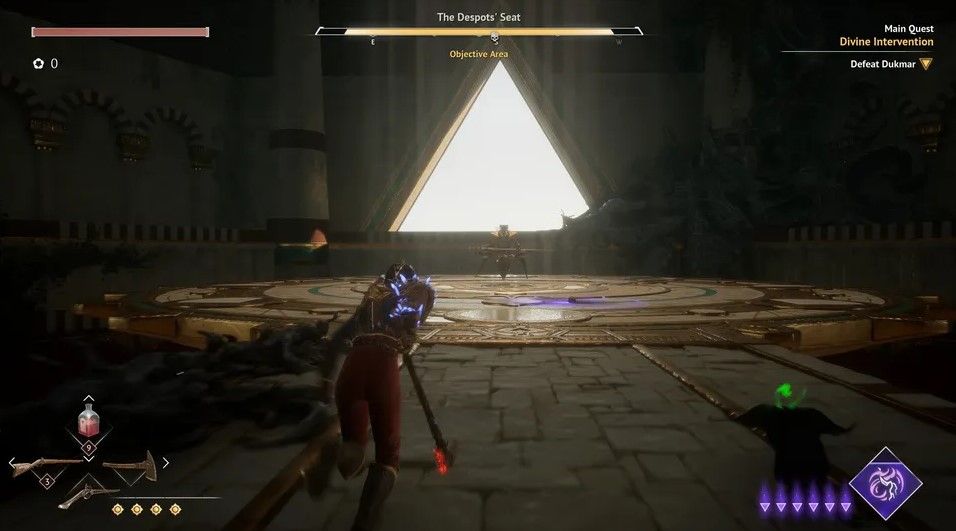
Flintlock: The Siege of Dawn Review – Accessible and Engaging Soulslite
Nearly five years after the launch of Ashen, Wellington-based game developer A44 is set to release its second game, Flintlock: The Siege of Dawn.
While Ashen was published by indie label Annapurna Interactive and brought up through the ID@Xbox program as an Xbox/PC exclusive, Flintlock: The Siege of Dawn enjoys a higher profile and a full multiplatform launch from the start with publisher Kepler Interactive. A44 has doubled its size to create this game, increasing its headcount from 30 to 60 developers, which is still on the lower end for a developer aiming for near triple-A production levels.
Flintlock: The Siege of Dawn follows in the footsteps of its predecessor in many ways but also diverges in others. It is still largely inspired by the Soulslike genre created by FromSoftware, featuring bonfire-like Lodestones and camps as checkpoints, offering only one chance to recover lost experience (called reputation here) before it is gone forever, and having a limited number of potions that only recharge after resting at camps, which also respawns all regular foes in the world.
However, Flintlock: The Siege of Dawn is much more accessible for those who, like myself, aren’t particularly enthusiastic about standard Soulslikes. A44 did not shy away from adding a difficulty selection, unlike FromSoftware. While the mere mention of it may sound borderline heretical to diehard fans of Dark Souls and Elden Ring, the Japanese studio’s refusal to allow easier settings in their games keeps a significant portion of potential fans from enjoying those titles. There’s a reason why the ‘easy’ (or rather, normal) difficulty mods are extremely popular on PC, while console users must endure the challenge as-is or simply walk away.

No such ordeal is necessary in Flintlock: The Siege of Dawn, which offers three difficulty options: Story (which disables Achievements), Normal (described as balanced but challenging), and Possessed, which provides a punishing experience akin to what Souls fans have come to love and hate simultaneously. Additionally, players can fast travel at will and without any cost to any unlocked Lodestone or camp.
Overall, while playing on Normal, I felt none of the typical frustration associated with playing a Soulslike game. Admittedly, there were a few tougher boss fights and enemies requiring tactical adjustments, but that’s par for the course for any action RPG like God of War, which also inspired this game. A44 aimed to position Flintlock as an entry point for the genre, ensuring it is not unfair to players. In this regard, the game succeeds brilliantly.
It’s great that the game is so accessible, allowing players to experience a unique fantasy world inspired by the Flintlock genre. In this setting, firearms and black powder are as prevalent as magical beings.
Protagonist Nor Vanek (voiced by Olive Gray, known as Miranda Keyes in the Halo TV series) is a Sapper, trained from a young age (as a war orphan) to be part of an elite combat engineering unit within The Coalition army. The Coalition stands against the army of the Dead pouring out of the city of Dawn for the past decade. At the beginning of the game, Nor’s adoptive father, Baz (voiced by Elias Toufexis, known for playing Adam Jensen in the last two Deus Ex games), embarks on a suicide mission with a few other Sapper unit members to bomb the Door to the Great Below, in a desperate attempt to stop the flow of undead. Being highly protective of Nor, he leaves her behind, but she rushes to join the squad upon learning of their endeavor.

The team seemingly succeeds in blowing up the Door, but this creates new problems instead of fixing anything. A few malevolent gods escape and wreak havoc throughout the world (a unique mix of Mesopotamian, Egyptian, Middle Eastern, and New Zealander influences). Nor is initially separated from the Sapper unit but finds a mysterious companion, the fox-like god Enki (voiced by Alistair Petrie, known for playing General Draven in Rogue One: A Star Wars Story). Despite her initial mistrust of any god, Nor eventually agrees to work with Enki to defeat the rampaging gods. If you’re worried about Enki being as annoying as Forspoken’s Cuff, rest assured that is not the case.
While not filled with twists, the story, told through conventional dialogue and cinematics rather than FromSoftware’s cryptic ways, is ultimately enjoyable. The developers made the supporting characters interesting despite dedicating only a modest amount of quest content to them. While I support the term Soulslite for Flintlock: The Siege of Dawn regarding being a leaner, more accessible version of Soulslike, the game is perhaps a bit too ‘light’ on content overall.
A44 estimated a length of 20 hours plus another 10 for completionists, but Steam recorded my playthrough at 14.7 hours, with achievements confirming completion of all side quests, liberation of all villages, unlocking of all firearms, finding all Enki feathers (which level up your companion for better combat performance), and fully upgrading my campsite. The side content was enjoyable, but there was so little compared to the usual action RPG that it’s hard not to feel slightly disappointed, especially if you’re having fun. Granted, the game is priced at $39.99, but you’re still left wanting more.

This extends to character progression. You can obtain new armor and weapons (both melee and ranged), but there’s only a handful throughout the game. The same goes for the skill tree, allowing specialization in Steel (melee), Black Powder (Ranged), or Magic (provided by Enki), though you’ll likely end up with a mix of all three due to the tree’s size. On the bright side, Flintlock: The Siege of Dawn lets you ‘unlearn’ skills while refunding a significant amount of reputation to invest elsewhere, encouraging experimentation.
The game’s combat is relatively fast-paced and requires full use of Nor Vanek’s tools. For example, an unblockable (red) attack can be dodged, but a better option might be to use your trusty firearm to stun the enemy briefly. There are also grenades and various types of firearms, including a cannon and a flamethrower.
Traversal is fun, taking advantage of a high degree of verticality in map design. The developers previously described it as Spider-Man-like, though I wouldn’t say that’s accurate. In Spider-Man games, you can move freely while web-swinging, whereas here, you’re zipping through predetermined magical rifts. Still, it’s an effective way to reach secret areas and fully explore the world.
Visually, Flintlock: The Siege of Dawn looks good without being mind-blowing. Powered by Unreal Engine 4, an upgrade to UE5 could have improved the game significantly, enhancing visuals with Lumen and Nanite and improving stuttering issues introduced by Epic.
Unfortunately, the game suffers from the stuttering seen in many UE4 games released in the past two years. It’s not as severe as The Callisto Protocol, but it’s noticeable even on a PC with an RTX 4090 and NVIDIA DLSS 3 enabled.








By Andrej Kovacevic
Updated on 18th July 2024